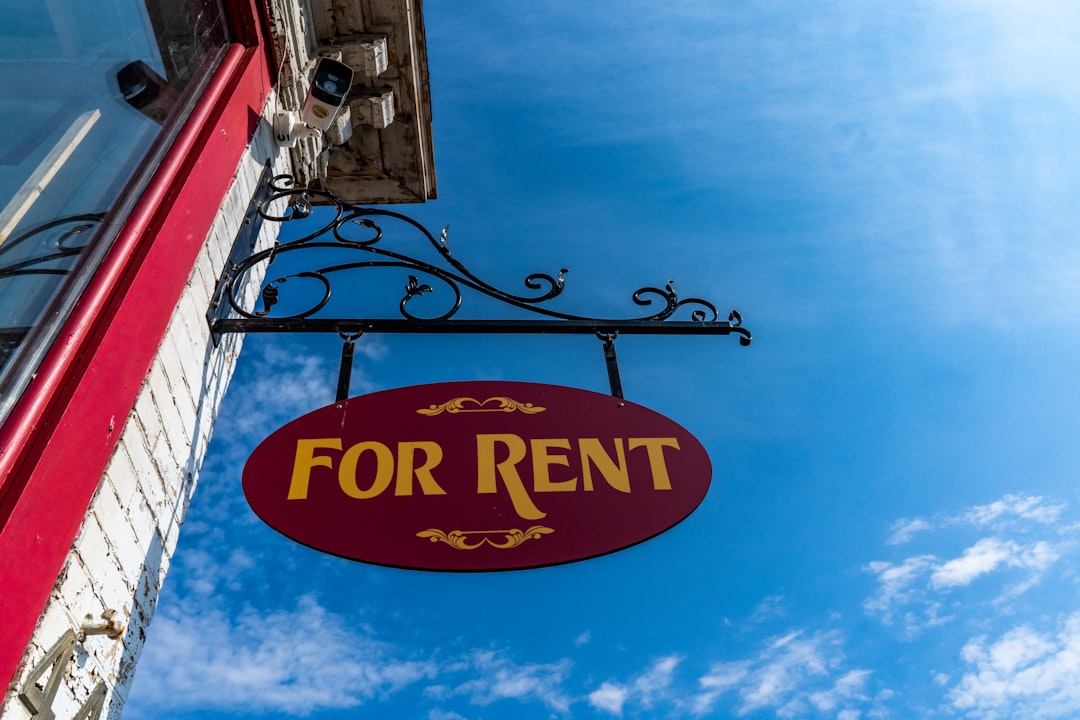

Engage prospects with a scan and streamline customer engagement with FREE QR code marketing tools by Sona – no strings attached!
Create a Free QR CodeFree consultation

No commitment

Engage prospects with a scan and streamline customer engagement with FREE QR code marketing tools by Sona – no strings attached!
Create a Free QR CodeFree consultation

No commitment
In today’s digitally driven real estate rental services industry, bridging physical property tours, signage, and marketing materials with the immediacy of digital engagement is a pressing challenge. Property managers and leasing teams often lose track of valuable prospects; interest captured from walk-ins, flyers, or open houses frequently slips through the cracks, especially when paper-based tracking or static ads disconnect offline attention from actionable follow-up. This disconnect not only slows down response times but also leaves high-potential renters untracked, leading to lost leasing opportunities and mounting frustration over wasted ad spend.
Modern solutions like QR codes offer a seamless, real-time bridge between in-person property interactions and digital lead capture, drastically reducing missed touchpoints. Instead of relying on renters to remember or manually enter URLs, a simple scan enables direct access to digital forms, virtual tours, or instant messaging with leasing agents. This immediacy allows rental marketers to modernize property marketing, eliminate gaps in lead tracking, and surface genuine renter intent, addressing the industry’s longstanding struggle to identify and act on high-value engagement. See real estate QR examples.
This article explores how QR codes can transform lead generation for real estate rental services, highlighting real-world pain points, best practices, and actionable strategies for marketers determined to close the offline-to-online gap and drive measurable results.

High-quality lead capture in rental marketing begins with removing friction. Printed brochures, paper sign-in sheets, manual email collection, and static URLs all create drop-off points for prospects who show interest but never convert into contacts. QR codes convert those analog moments into digital actions that feed directly into your CRM, saving time for your team and creating a smoother experience for renters.
Replacing outdated processes is not just about convenience, it is about data accuracy and speed-to-lead. When renters scan a code at an open house or from a window decal, they should be able to complete a short form, book a tour, or start an application immediately. Each scan can also carry context, such as which property sign they scanned or which campaign drove the interest, which helps prioritize follow-ups for high-intent renters.
QR codes help rental teams deliver a coherent journey from first glance to lease signing. With a platform like Sona QR, you can create dynamic codes, tag scans by property, and route data to your CRM or marketing tools for automated nurture and attribution.

QR codes directly address core rental marketing challenges that stem from offline-to-online gaps. A high percentage of renter discovery still happens offline: drive-bys, window shoppers, and building visitors. Without a fast and intuitive way to convert these micro-moments into digital signals, you lose the chance to start a timely conversation. QR codes solve that by giving every print or physical placement a one-scan onramp to action.
They also offer flexibility that traditional print can never match. When pricing changes or units lease up, a dynamic QR code lets you update the destination instantly without reprinting materials. The same poster can now route prospects to a new unit, a new floor plan, or a virtual tour that was not available when the sign was created.
In practice, this means appointment cards can include a QR code to confirm or reschedule viewings, lobby posters can route to a concierge chat, billboards can offer a one-scan way to request a callback, and flyers can lead to a virtual tour or a shared amenities walkthrough. The result is a faster, cleaner path from interest to action.

Real estate rental teams benefit from a small set of QR formats that cover most high-impact scenarios. Each format corresponds to the action you want the renter to take. Choosing the right one simplifies the journey and increases conversion.
Two formats are especially powerful for leasing: dynamic web links and mobile-first forms. Dynamic links keep printed assets relevant while forms capture the structured data needed to qualify and schedule next steps. You can also use vCards for agent contacts, SMS for quick replies, and Wi-Fi for events or resident lounges.
With Sona QR, you can generate and manage these formats centrally, organize them by property, and apply campaign tags for clean reporting and attribution.

Rental marketers often concentrate on listings and digital ads while underutilizing the high-intent offline moments that surround a property. Look for places where renters are physically close to a decision but lack a clear next step. These are the moments where a QR code can turn ambient interest into a measurable lead.
To uncover growth opportunities, audit every physical surface renters see, along with every printed asset used by your team. Consider visibility by time of day, distance, and scanning conditions. Choose placements that pair a motivated audience with a compelling call to action.
By prioritizing these high-intent touchpoints, you increase the volume of qualified leads without relying solely on expensive listing sites or broad digital campaigns. A single poster in the right window can consistently produce tour bookings if it uses a clear CTA and routes to an optimized page. For fresh ideas, explore 9 ways.

QR codes shine when they remove steps and make outcomes immediate. Focus on moments where curiosity must quickly convert into qualification, conversation, or commitment. The following use cases map to common renter interactions and address specific friction points that analog tactics cannot solve.
For best results, decide the primary action you want to drive and streamline the experience around that. A code near a front door might favor booking a tour, while a code on a brochure might highlight a virtual walkthrough or an application start.
Each use case should be tied to a measurable outcome, such as tour requests, form completions, or application starts. Over time, you can invest more in the placements and messages that demonstrate clear impact.
Every scan is a signal, and the most valuable campaigns use those signals to build audience segments that align with renter intent. Segmentation lets you treat a weekend window shopper differently from someone who scans a code inside a model unit to begin an application. With the right setup, each scan adds context to a contact record in your CRM and triggers tailored follow-ups. For retargeting tactics, see Sona’s Playbook.
In rental marketing, segmentation often maps to location and journey stage. For example, a code on an outdoor sign might indicate early awareness, a code on a floor plan brochure might signal consideration, and a code on an application poster strongly suggests conversion intent. By tagging scans with these indicators, you can deliver more relevant messages, reduce unsubscribe rates, and improve conversion velocity.
The result is a smarter funnel where you only retarget people with proven intent signals, spending less to get better outcomes and freeing your team to focus on the right conversations.
Your marketing mix likely spans listings, social media, email, direct mail, building signage, and events. QR codes act as connectors, turning static assets into two-way channels and linking analog impressions to digital journeys that can be tracked, tested, and optimized. This helps you understand which channels not only create awareness but also drive pipeline and signed leases.
To get the most from QR integration, assign unique codes to each asset, placement, or creative version. This gives you unified reporting across channels and allows true A/B testing in traditionally hard-to-measure environments like windows, elevators, and mailboxes.
With a centralized platform like Sona QR, you can manage codes for each channel, monitor performance from a single dashboard, and sync scan data with your CRM and ad platforms. This eliminates blind spots and reduces the wasted spend that comes from untracked print and offline efforts.
To run a high-performing QR campaign, treat it like any other performance initiative: set clear goals, choose the right format, design for context, deploy strategically, and optimize based on data. The following checklist outlines a practical path from planning to results.
Start by defining a single, specific outcome. In rental marketing, common goals include booking tours, starting applications, capturing waitlist interest for upcoming units, or collecting preferences for unit type and move-in timing. Narrow your focus so the experience aligns with renter expectations and you can measure success cleanly.
Choose the format that best matches your desired action. Dynamic QR codes are usually the right choice for leasing because they allow edits after printing and support tracking and retargeting.
Design matters. The environment will dictate size, contrast, and placement, while the message should set clear expectations about what happens after scanning. Test thoroughly to ensure reliability in the real world.
Prioritize placements where intent is high and identification is low. This often includes property exteriors, lobbies, direct mail, and event spaces where renters are already thinking about housing decisions.
Use analytics to identify what is working and what needs improvement. Assess not only scan volume but also downstream actions such as form completion and application start rates.
Modern platforms like Sona QR support campaign tagging, real-time analytics, and CRM integrations. This makes it easier to iterate while a campaign is live and attribute scans to signed leases.
Many real estate marketing teams struggle to prove which physical touchpoints are worth the investment. QR codes, when connected to analytics and CRM systems, transform guesswork into a source of truth that spans from the first scan to a signed lease. You can view scan activity by property and asset, tie it to contact records, and analyze which placements produce qualified pipeline rather than vanity metrics.
Full-funnel attribution turns QR from a novelty into a performance lever. By linking scan behavior with website sessions, form submissions, tours, and applications, you can see how each campaign contributes to revenue; see Sona’s offline attribution for frameworks.
Sona QR captures real-world engagement, while Sona.com helps connect those engagements to revenue. Together, they provide a data-backed foundation for allocating spend and improving campaign effectiveness across your portfolio.
As you scale QR usage across properties and campaigns, small best practices add up to big gains. Focus on standardizing how you create, place, and measure QR codes so that insights translate across teams and locations.
It is also important to train leasing staff to promote scanning and explain the benefits to renters. A staff member who says “Scan here to see real-time pricing and available move-in dates” will drive far more action than a silent poster in the lobby.
With these practices, you move beyond one-off experiments and build a repeatable system that elevates both renter experience and marketing performance. Sona QR supports this evolution with templates, brand controls, and integrations that keep campaigns consistent and measurable.
The traditional challenges of bridging offline real estate marketing with online engagement are being solved through thoughtful QR code adoption. By turning every sign, mailer, brochure, and event into a digital entry point, rental teams can catch interest at the source, speed up follow-up, and prove which touchpoints truly impact leasing outcomes. The result is not just more leads, but better qualified conversations and shorter cycles from tour to lease.
What sets successful teams apart is a commitment to design for context, measure what matters, and iterate. When QR codes are connected to a central platform, a CRM, and a clear strategy for segmentation and follow-up, they become part of a reliable growth engine. With Sona QR, you can manage campaigns across properties, track scans to revenue with Sona.com, and build the data-driven processes that win in a competitive rental market. Start creating QR codes for free.
QR codes have transformed real estate rental services from traditional, static listings into dynamic, lead-generating powerhouses. Whether it’s attracting prospective tenants, enhancing property viewing experiences, or capturing qualified rental leads, QR codes streamline interactions and provide real-time data to maximize every marketing touchpoint.
Imagine knowing exactly which property flyers or rental ads drive the most inquiries—and instantly updating those campaigns without reprinting a single flyer. With Sona QR, you can create dynamic, trackable QR codes in seconds, connect every scan to actionable lead insights, and optimize your rental campaigns for faster tenant acquisition and higher occupancy rates. No more guesswork, only smarter, more profitable leasing efforts.
Start for free with Sona QR today and turn every scan into a rental lead, a property showing, or a signed lease.
Use QR codes on property signs, brochures, and open house materials to provide instant access to virtual tours, real-time listings, and application forms, enabling seamless offline-to-online lead capture and faster follow-up.
Digitize open house sign-ins, use dynamic QR codes on signage to offer updated information, route scans to the appropriate leasing agents, integrate QR data with your CRM, and train staff to promote QR code scanning with clear benefits.
Deploy QR codes that enable instant tour bookings, application starts, virtual tours, and direct messaging with agents, and use automated follow-ups triggered by scans to ensure timely and personalized communication.
Place QR codes strategically on high-traffic physical assets like window decals, direct mail, event materials, and lobby posters with clear calls to action, use dynamic codes to keep content current, and segment audiences based on scan context for targeted follow-up.
Track scan metrics such as time, location, and device; integrate QR data with your CRM for lead scoring and segmentation; compare channel performance; conduct A/B testing on CTAs and placements; and attribute scans through to signed leases using analytics platforms.
Use Sona QR's trackable codes to improve customer acquisition and engagement today.
Create Your FREE Trackable QR Code in SecondsJoin results-focused teams combining Sona Platform automation with advanced Google Ads strategies to scale lead generation

Connect your existing CRM

Free Account Enrichment

No setup fees
No commitment required

Free consultation

Get a custom Google Ads roadmap for your business






Launch campaigns that generate qualified leads in 30 days or less.
